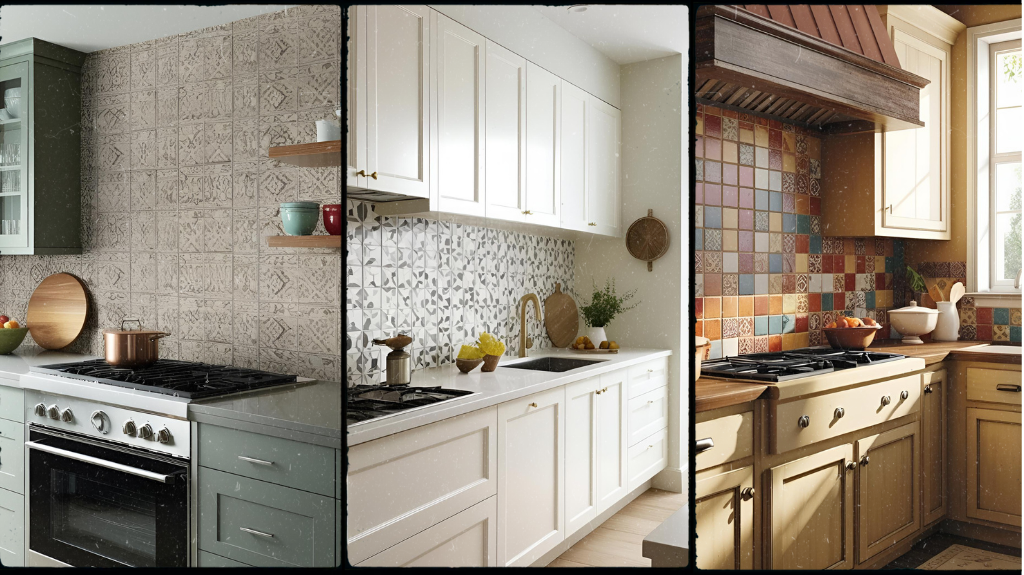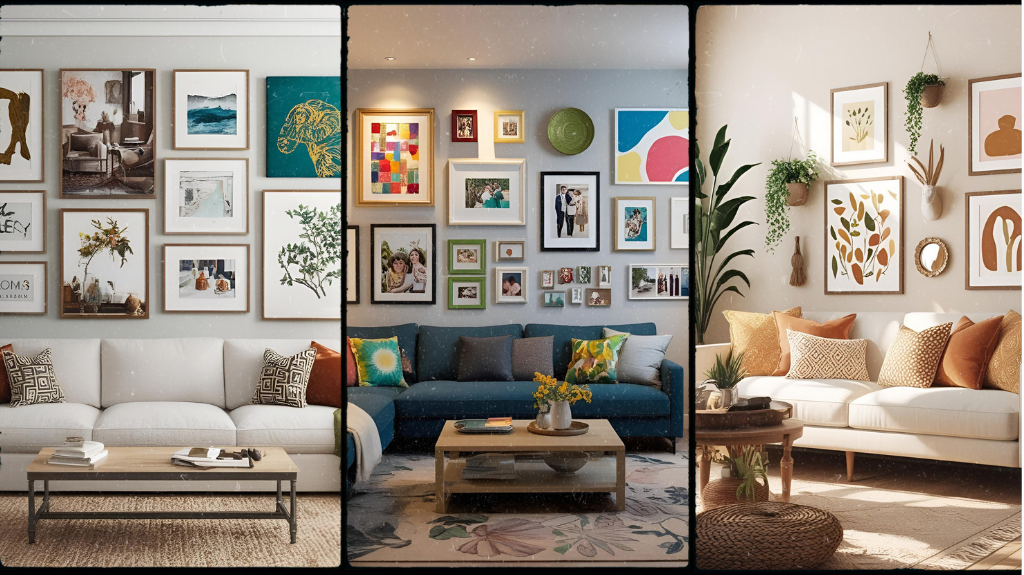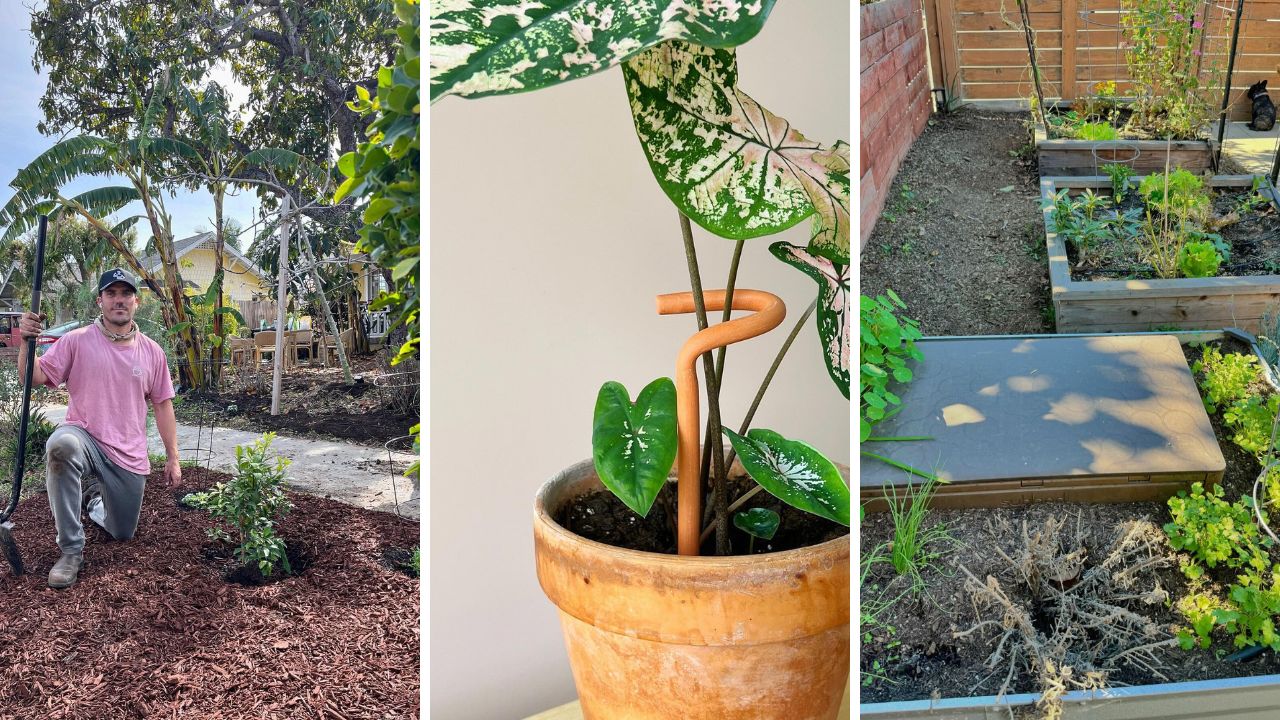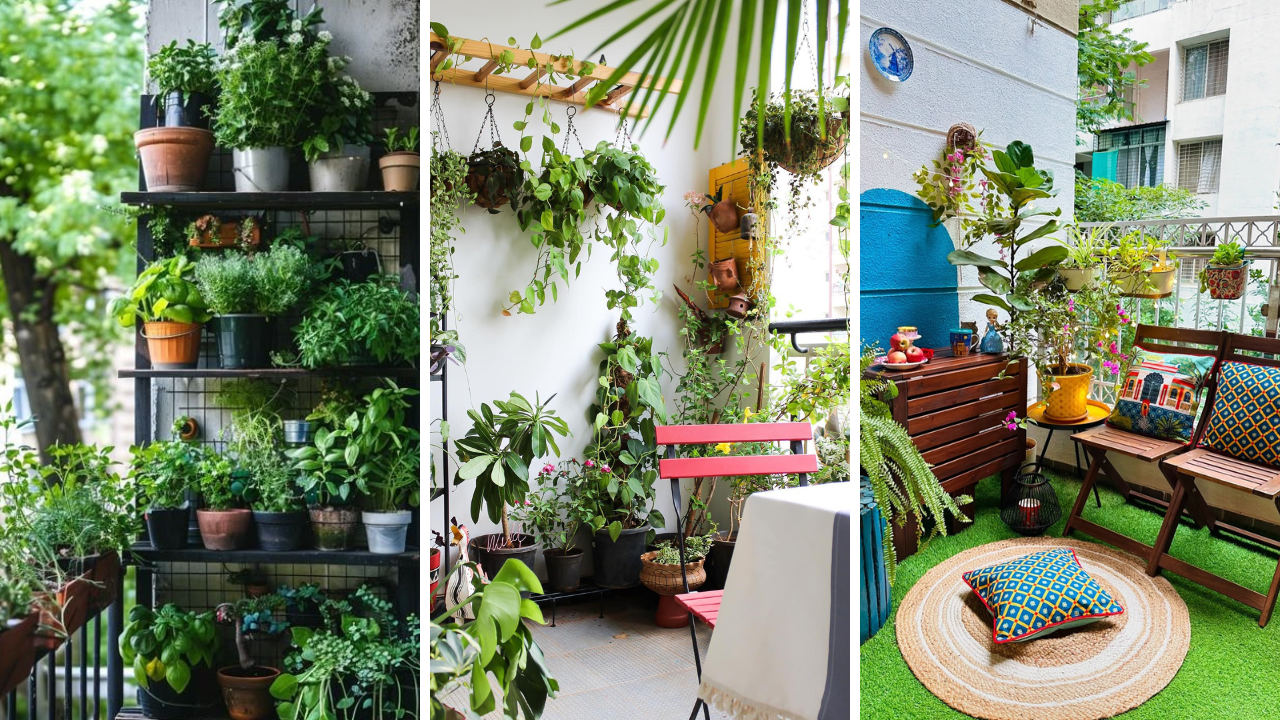If you’re anything like me, you know the TV wall is no longer just a spot to mount your screen. It’s the centerpiece of the living room, a space that reflects personality and style. Over the years, I’ve explored countless ways to transform this area into something functional yet visually stunning. Let’s dive into 27 modern TV wall ideas that can take your living room to the next level in 2025. I’ll also share my experiences and some real-life examples that worked wonders for me and others I’ve helped along the way.
1. Introduction to Modern TV Wall Design
Source @bossinteriorsug
- Overview of Evolution: Discuss how the role of the TV wall has evolved over time from just a functional piece to the centerpiece of the living room.
- Importance of TV Wall Design: Explain how TV wall designs contribute to the ambiance, aesthetic, and functionality of the space.
- 2025 Trends: Highlight specific design trends for the upcoming year, including color palettes, materials, and technology integration.
- Personal Journey: Elaborate on your experiences and how these concepts have worked in your personal and professional projects.
2. Built-In Shelving for Functionality and Style
Source @modernshelving
- Benefits of Built-In Shelving: Explore how built-in shelves not only add storage but also give the space a cohesive feel.
- Design Variations: Delve deeper into different ways built-in shelving can be designed, from open shelves to hidden compartments.
- Real-Life Examples: Share case studies of clients who opted for built-in shelving and how it transformed their spaces.
- Material Choices: Discuss material choices for shelving such as wood, metal, or even glass, and how each impacts the overall aesthetic.
- Maintenance Tips: Offer advice on maintaining built-in shelving to keep it looking fresh and functional.
3. Backlit LED Panels
Source @stonicamia
- Technological Advancements: Dive into the latest developments in LED technology and how they can enhance the TV viewing experience.
- Mood Lighting Effects: Discuss how different colors of LED lighting (warm, cool, RGB) can create different moods in the room.
- DIY vs. Professional Installation: Provide insights on whether backlighting is a DIY project or if professional help is needed for installation.
- Cost Considerations: Break down the costs involved in adding LED backlighting to a TV wall, and whether it’s a good investment for most homeowners.
4. Textured Wall Panels
Source @elevateinterior
- Types of Textured Panels: Examine the different types of materials for textured panels (wood, stone, fabric, etc.) and their benefits.
- Adding Depth to Small Spaces: Explore how textured panels can make a small room feel larger and more inviting.
- Eco-Friendly Options: Highlight sustainable and eco-friendly materials for textured wall panels that are both stylish and environmentally conscious.
- Installation Guide: Step-by-step guide on how to install textured panels, with tips on choosing the right type for your space.
5. Floating Media Console
Source @batamexus
Designing for Small Spaces: Discuss how floating consoles work well in small apartments or rooms with limited space.
- Hidden Storage Solutions: Provide more examples of floating consoles with integrated storage solutions for cable boxes, gaming consoles, and more.
- Materials and Styles: Expand on the materials and design styles of floating consoles, such as minimalist, rustic, industrial, or contemporary.
6. Gallery Wall Around the TV
Source @peristylia
- Choosing Art for Your Gallery: Offer guidance on how to curate a gallery wall that complements the TV without overwhelming it.
- Balancing Frames and Colors: Discuss how to balance the number of frames and the colors of the artwork to keep the space looking clean.
- Incorporating Family Photos and Memorabilia: Advise on how to mix personal touches like family photos with art to create a homey yet polished look.
7. TV in a Recessed Niche
Source @seds.interior
- Architectural Considerations: Dive into the design and technical aspects of building a recessed niche for a TV.
- Lighting Options: Discuss how to add lighting to the niche to highlight the TV or create a dramatic effect.
- Pros and Cons: Weigh the pros and cons of recessed TV niches in terms of installation difficulty, cost, and aesthetic value.
8. Wallpaper Accent Wall
Source @greydock
- Wallpaper Types: Explore different types of wallpapers that work well for a TV backdrop, from textured patterns to bold prints.
- DIY Wallpaper Installation: Provide instructions for installing wallpaper, with tips on selecting the right adhesive and tools.
- Cleaning and Maintenance: Offer maintenance advice for wallpapered walls to keep them looking sharp over time.
9. Integrated Fireplace and TV Wall
Source @fahari_fireplace
- Designing the Perfect Combination: Discuss how to properly design the integration of a fireplace with a TV to avoid creating an overwhelming focal point.
- Choosing the Right Fireplace: Go into detail on the types of fireplaces (gas, electric, wood-burning) and which works best for different living room styles.
- Safety Tips: Include safety precautions when combining fire and electronics in a living room setting.
10. Invisible Wiring Solutions
Source @rav_interiors_official
- Advanced Cable Management: Introduce more advanced cable management systems, including in-wall and behind-the-wall wiring solutions.
- Tech Tips for Keeping Wires Hidden: Provide more advanced techniques for hiding cables, such as using cable ducts, raceways, or custom cabinetry.
11. Minimalist Wall Mounting
Source @nymra
- Understanding Minimalism: Dive into the concept of minimalism in interior design and how it has influenced TV wall designs. Emphasize how simplicity and clean lines can make the TV a subtle yet stylish part of the room.
- Choosing the Right Wall Color: Expand on the importance of color choices for minimalist walls. Suggest shades that complement the minimalist aesthetic, such as matte black, off-white, or pale gray.
- Floating Shelves vs. Mounting: Discuss the pros and cons of floating shelves versus direct wall mounting, and why one might be chosen over the other depending on the room’s layout and size.
- Small Space Adaptations: Provide additional tips for implementing minimalist TV mounting in small living rooms, where space and visual clutter are critical concerns.
- Real-Life Example: Share an example from your personal experience, where a minimalist wall mounted TV transformed a space without overwhelming it.
12. Framed TV for an Art-Like Appearance
Source @hkcung
- Framing Materials: Go into the different materials used to frame a TV, such as wood, metal, or even fabric. Each material brings a different feel, from rustic charm to modern chic.
- The Digital Art Trend: Discuss how some TVs function as digital art displays when not in use. Mention services that allow TVs to display famous artworks or customizable pieces that match the room’s decor.
- Installation and Framing Options: Provide guidance on how to install a frame, whether you’re using pre-made solutions or creating a custom frame to fit your TV.
- Choosing the Frame Design: Elaborate on how to select a frame design that complements the room’s overall aesthetic. Should the frame match the furniture, or is it better to use contrasting materials for visual impact?
- Cost Breakdown: Discuss the costs involved in framing a TV, from basic frames to high-end custom designs, and how to achieve a premium look on a budget.
13. Vertical Garden Surround
Source @flowerboxtr
- The Green Living Trend: Explore how indoor plants and vertical gardens have become a major design trend. Discuss the psychological benefits of having plants around, including improved air quality and a calming atmosphere.
- Choosing Plants for Vertical Gardens: Offer tips on selecting plants that thrive in indoor environments with low light. Include recommendations for both low-maintenance plants like snake plants and ferns, and more exotic varieties for a unique touch.
- DIY Vertical Garden Ideas: Provide step-by-step instructions for creating your own vertical garden around the TV, including ideas for shelving systems or hanging planters.
- Sound Absorption Benefits: Dive into the practical benefits of using a vertical garden around the TV. Discuss how plants can naturally absorb sound, making them a great option for acoustic treatment in living rooms with high ceilings or hard surfaces.
- Maintenance Tips: Offer advice on keeping the vertical garden healthy, from watering schedules to light requirements.
14. Sliding Barn Doors
Source @studioedenbyebh
- Farmhouse Aesthetic: Explain the farmhouse design style and why it pairs so well with sliding barn doors around the TV. Discuss how this rustic touch creates a warm, inviting space.
- Space-Saving Benefits: Discuss the space-saving advantages of sliding barn doors over traditional hinged doors, especially in rooms with limited space for door clearance.
- Materials for Barn Doors: Delve deeper into the material options for barn doors, such as reclaimed wood, steel, and even glass. Each option offers a different texture and feel to match the room’s decor.
- Hardware and Mechanism: Explain the types of hardware needed to install sliding barn doors, including tracks, handles, and other components. Offer advice on choosing durable and stylish hardware that enhances the door’s overall aesthetic.
- Customizations and Features: Discuss customization options for sliding barn doors, such as using frosted glass panels or incorporating built-in shelves for additional storage.
15. Mixed Materials for Contrast
Source @_design_studio_91
- Why Mixed Materials Work: Explore the concept of combining different materials like wood, metal, and glass, and how they create a dynamic, visually striking design. Emphasize how contrast can energize the space while adding sophistication.
- Material Pairings: Discuss ideal pairings of materials for the TV wall. For example, pairing a wood backdrop with sleek metal shelving or a glass coffee table. Offer additional pairings such as stone with leather, or concrete with wood.
- Texture and Visual Interest: Explain how mixing materials introduces varied textures, which not only looks beautiful but also helps to balance the room’s atmosphere—combining smooth with rough, warm with cool, etc.
- Examples from Design Showcases: Share real-life examples where mixing materials led to standout TV wall designs in recent projects.
- Design Tips for a Balanced Look: Offer tips on avoiding clashing materials by choosing elements that share common colors or textures, ensuring the room doesn’t feel chaotic.
16. Painted Accent Wall
Source @alexandragater
- Choosing the Right Color: Go beyond the basics of color theory and discuss how different shades influence mood. For instance, how navy blue creates a calm, serene space, or how mustard yellow can evoke energy and warmth.
- Types of Paint Finishes: Explain the different finishes—matte, satin, gloss—and when each is appropriate for a TV wall. Glossy finishes might reflect light and make the TV stand out, while matte finishes offer a more subtle, understated look.
- Bold Designs and Patterns: Dive into the potential for creating more complex accent walls with geometric patterns, ombre gradients, or even color blocking, and how these can modernize a TV area.
- Complementing the Furniture: Discuss how to coordinate the color of the TV wall with the furniture and other accents in the room. The wall should complement the furniture’s color and material but can also serve as a bold contrast.
- Real-Life Inspiration: Provide case studies of rooms where bold accent walls helped elevate the TV area. Mention any design challenges faced during the process and how they were overcome.
17. Hidden TV Lift Systems
Source @iconnectvlift
- Technology Behind Hidden TV Lifts: Offer a detailed look at the technology behind TV lifts, explaining how motors, mechanical arms, and custom cabinetry work together to make a TV appear or disappear at the push of a button.
- Designing for Hidden TVs: Discuss how to design a TV lift system that seamlessly integrates into the room. This could involve custom cabinetry or a specially designed console to hide the TV when not in use.
- Best Uses for TV Lifts: Explain the situations where a TV lift is particularly useful, such as in rooms with multipurpose uses, where you don’t want the TV to be the focal point all the time.
- Cost and Installation: Provide insights into the costs of TV lift systems, from budget-friendly options to high-end models, and what to expect in terms of installation complexity.
18. Art-Led Display
Source @hiasliving
- Enhancing TV with Art: Expand on how pairing a TV with oversized art pieces can change the visual flow of the room. Discuss the importance of art that doesn’t compete with the TV but instead complements it.
- Mounting Options for Art: Provide options for mounting both the TV and artwork in a way that feels natural. For example, mounting the TV off-center or having artwork directly next to it to frame the screen.
- Collaborating with Artists: Offer advice for those who want to commission custom art for their living room that aligns with the color and design of their TV wall.
- Balancing Functionality and Aesthetics: Discuss how the TV wall can still serve its functional purpose while incorporating art that enhances the room’s beauty, and why this balance is key in modern design.
19. Concrete Backdrops
Source @leukinteriorfinishes
- Industrial Elegance: Concrete has become synonymous with industrial design, adding a raw, modern edge to any living room. Expand on how the clean lines and rugged texture of concrete can balance a contemporary space, especially when paired with sleek, minimal furniture.
- Polished vs. Raw Concrete: Discuss the difference between polished concrete for a smooth, sophisticated look and raw concrete for a more rustic, unfinished feel. Each version brings a different atmosphere to the room.
- Incorporating Concrete with Other Elements: Explore how concrete works well with other materials such as wood, steel, or glass. For instance, combining concrete with wooden shelving or a metal media console creates a dynamic mix of textures that feels contemporary and balanced.
- Maintenance Considerations: Offer tips for maintaining a concrete wall, as it can sometimes absorb dust or stains. Suggest sealing concrete to protect it and ensure longevity.
- Creative Concrete Alternatives: Provide alternatives to actual concrete, such as faux concrete wall panels or textured wallpapers that mimic the industrial aesthetic. These options are budget-friendly and easier to install.
20. Accent Lighting Strips
Source @lightcube360
- Lighting to Set the Mood: Accent lighting strips are perfect for highlighting architectural features and creating mood lighting around your TV wall. Discuss how the right lighting can drastically change the atmosphere, whether you’re in the mood for a relaxing movie night or a vibrant, party-ready setting.
- Placement Tips: Offer placement advice on where to install accent lighting strips—along the top and bottom edges of the TV wall, under floating shelves, or even in the corners of the room for a soft, indirect light.
- Color-Changing LED Strips: Dive into the variety of smart LED strips available, which allow you to change colors and brightness with the touch of a button. Talk about how this feature can be fun and functional, adjusting the lighting based on the type of content being viewed or the time of day.
- Energy-Efficiency and Durability: Highlight the energy-efficient benefits of LED lighting strips and how they provide long-lasting lighting without significantly increasing electricity costs.
- Designing Around Lighting: Explain how accent lighting can enhance the overall design of the TV wall. The strategic use of lighting can bring attention to certain design elements, such as textured walls or framed art, while casting softer, ambient light to avoid a harsh glare on the screen.
21. TV Inside a Bookshelf
Source @nateberkus
- Blending Function and Style: One of the most creative and stylish ways to hide the TV is by integrating it into a bookshelf. This design allows you to blend your entertainment system seamlessly into the room’s decor while still providing ample storage for books and decor items.
- Custom Built-In Bookshelves: Explore the benefits of custom bookshelves designed specifically around the TV. These can be tailored to fit your space, with shelves for decorative objects, books, and even a small wine rack or bar area.
- Flexibility in Design: Discuss how adjustable shelving options can give you the flexibility to adjust the arrangement based on your needs. For example, sliding shelves or adjustable dividers allow for easy reorganization as your collection grows or changes.
- Creating a Dual-Focus Point: Explain how a TV inside a bookshelf can create a dual-focus point in the room. The bookshelves act as both an aesthetic feature and a functional part of the space, making the TV less of a dominant visual element.
- Blending with the Room’s Style: Provide advice on how to blend the bookshelf and TV with the rest of the room. Whether your space is more traditional with dark wood tones or modern with sleek, minimal shelves, making the TV wall complement the room’s overall vibe is key.
22. Mirrored TV Wall
Source @reflectel.mirrortv
- Reflecting Light for a Spacious Feel: Mirrors are an excellent way to reflect light and make a room feel larger. When strategically placed around the TV, they can open up small spaces, especially in apartments or homes where maximizing space is essential.
- Choosing the Right Mirror Styles: Dive into the different types of mirrors that work well with TV walls. Round mirrors, for example, offer a soft contrast to the angular lines of a TV, while rectangular mirrors can frame the TV area in a cohesive way.
- Decorative Mirror Frames: Discuss how mirrored panels with decorative frames can add a luxurious, high-end feel to the space. Whether it’s a vintage gold frame or a sleek, modern chrome finish, mirrored accents can elevate the overall look.
- Reflections and TV Viewing: While mirrors can make a room feel larger, they can also pose a challenge by reflecting unwanted glare from the TV screen. Offer solutions like placing the mirrors at angles where they reflect light but don’t interfere with TV viewing.
- Maintaining a Clean Reflection: Offer tips on keeping mirrors clean, as they are more prone to showing fingerprints and smudges, which can detract from their elegance.
23. Wainscoting with a Twist
Source @motor_city_designworks
- The Classic Look with a Modern Upgrade: Wainscoting adds a classic, refined touch to any room. But for the TV wall, give it a modern twist by experimenting with unusual patterns or bold color choices. For example, chevron, herringbone, or vertical panels can add extra flair while keeping the traditional charm.
- Complementing the TV Area: Discuss how wainscoting can be used not just as a background but as a design element that complements the TV. Whether you go with deep, dark tones or light, airy neutrals, wainscoting helps to frame the TV wall.
- Creative Paint and Finish Options: Explore the different ways to finish wainscoting, from high-gloss finishes that reflect light to matte finishes that offer a more subdued and elegant appearance. You could also incorporate different colors into the wainscoting, making it stand out from the rest of the room.
- Integrating Technology with Tradition: Mention how modern TV setups, like wall-mounted units or hidden speakers, can be seamlessly integrated into a wainscoted wall. For example, you can conceal tech devices behind panels or use in-wall speakers that don’t disrupt the traditional look.
- Personalized Detailing: Offer tips for customizing wainscoting. Whether through custom panel sizes, color accents, or even mixing materials like wood and metal, there are endless ways to make wainscoting uniquely yours.
24. Hidden Speakers and Soundbars
Source @boca_tech_and_automation
- Invisible Audio Technology: For audiophiles who don’t want to compromise their sound quality but want to keep their TV wall looking clean and modern, hidden speakers and soundbars are an excellent solution. Explain the different options available, such as in-wall, in-ceiling, or behind-the-wall speakers.
- Soundbar Integration: Discuss how soundbars can be integrated into the TV wall design for a cleaner look. Many modern soundbars can be mounted directly beneath the TV, or even recessed into the wall, providing high-quality sound without cluttering the space.
- Acoustic Treatment and Design: Offer advice on how to properly design and position hidden speakers to ensure optimal sound quality. This may involve using materials that help with acoustics, such as soft furnishings, or designing the wall to reflect sound in an optimal way.
- Control and Flexibility: Discuss the benefits of having hidden speakers that can be controlled with smart technology. Whether through remote controls or smartphone apps, integrating these systems into your TV setup allows for seamless audio control without interrupting the sleek look of the room.
- Blending Sound Systems with the Decor: Highlight how hidden speakers and soundbars can be incorporated into the decor of the TV wall. Whether the system is tucked behind a bookshelf or within custom cabinetry, this makes the room feel more refined and polished.
25. Curved Wall Designs
Source @thelocalinnterior
- Futuristic and Unique: Curved wall designs bring a futuristic, dynamic element to any space. These walls create visual interest and move away from the rigid, angular lines common in most TV wall designs.
- Smooth, Seamless Look: Discuss how curved walls can help soften the sharpness of modern architecture while adding flow to the room. Curves make spaces feel more organic and welcoming, which works beautifully in living rooms.
- Incorporating Technology into Curves: Explore how technology can be integrated into curved walls. This includes curved screens, which fit perfectly into the flow of the wall, and audio systems that are designed to follow the curve to enhance acoustics.
- Creating the Curve: Offer design and construction tips for building a curved wall around your TV. This might involve working with architects and designers to ensure that the curvature doesn’t interfere with the room’s functionality or aesthetics.
- Benefits of Curved Walls: Provide insights into the benefits of curved walls, such as how they can create a more expansive and inviting feeling, especially in larger spaces. Curves can also direct the eye towards the TV, making it a natural focal point.




